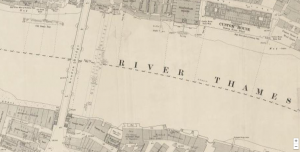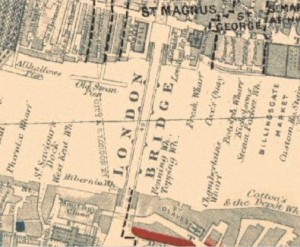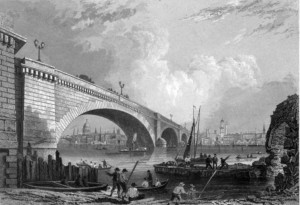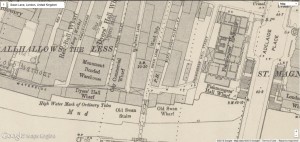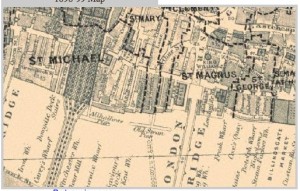
The London Bridge, the first stone bridge to be built in England across the Thames from the city of London to Southwark. The bridge has been rebuilt numerous times over the years it has been around (Victorian Web).
Although many versions of this bridge have been built, the bridge designed by John Rennie and built by his sons John and George Rennie would have been the one that was mentioned in Sir Authur Conan Doyle’s work (Victorian Web).
In the particular story, The Man with the Twisted Lip , we see the London Bridge when Watson is in search for one of his patients in an Opium Den. When Victorians read this story they would have known that around the London Bridge, Opium Dens would be present. Opium was always associated with people of the east (from Asia) and sailors. Surrounding London Bridge were many docks. Opium Dens popped up around these docks because of the association of opium and sailors/Asians. Doyle makes it ironic in the fact that the man out of his mind in the opium den is an “upstanding” patient of Dr.Watson.
Opium dens were perfectly legal at this time however “good” men were known to get lost in them. These men changed as soon as they stepped into the den. For instance Mr. Neville St. Claire who has “disappeared” has actually changed his whole persona into a beggar. The reader can then see the London Bridge as a turning point. Once the men have crossed that bridge and made their way to the dens, they are changed themselves.
Another inference that could be made is the bridge is a symbol. The bridge, as said before, has changed numerous times.From tinder to stone to being moved a few yards.. Although Victorians may have not seen the recent changes, they would have known of a few that have happened over time and may have witnessed one themselves. The characters are crossing a bridge that has changed numerous, to be “changed” themselves.
Sources
http://www.victorianweb.org/victorian/art/architecture/feist/30.html
http://www.victorianweb.org/graphics/fearnside/47.html
http://www2.warwick.ac.uk/fac/arts/english/currentstudents/undergraduate/modules/fulllist/special/endsandbeginnings/twistedlip.pdf
http://www.britannica.com/topic/Old-London-Bridge

